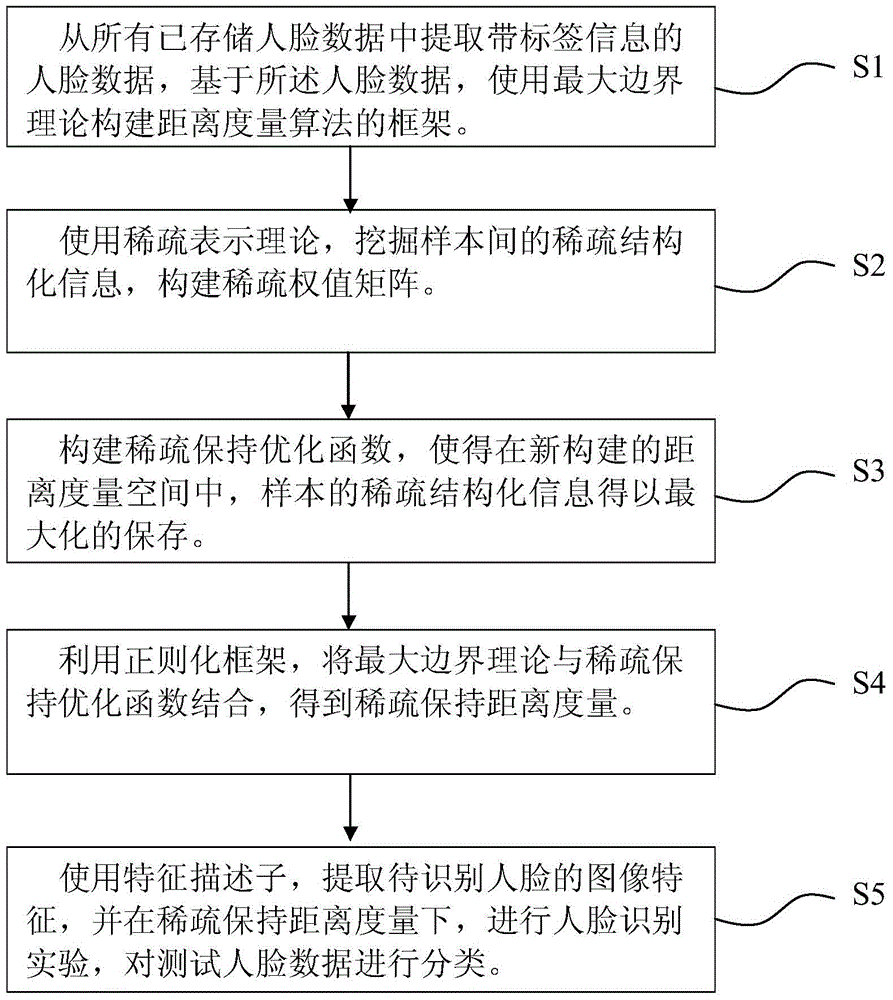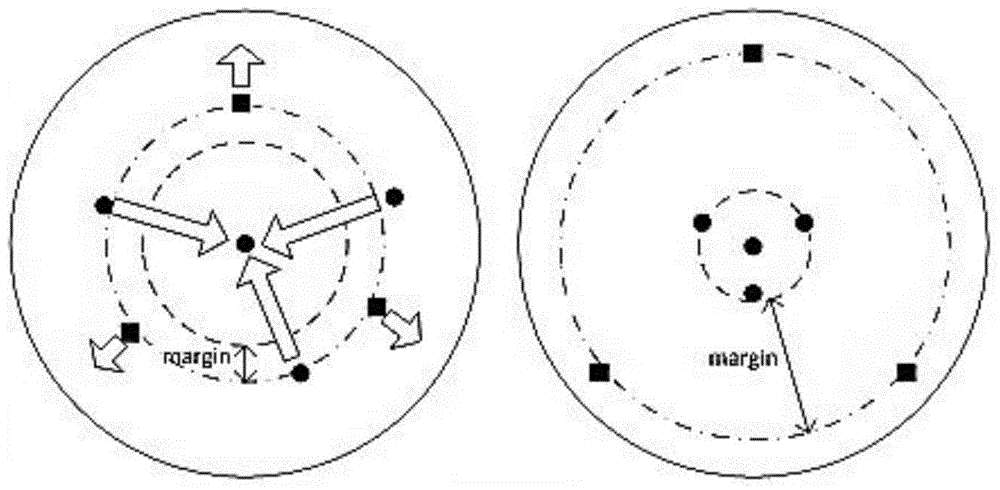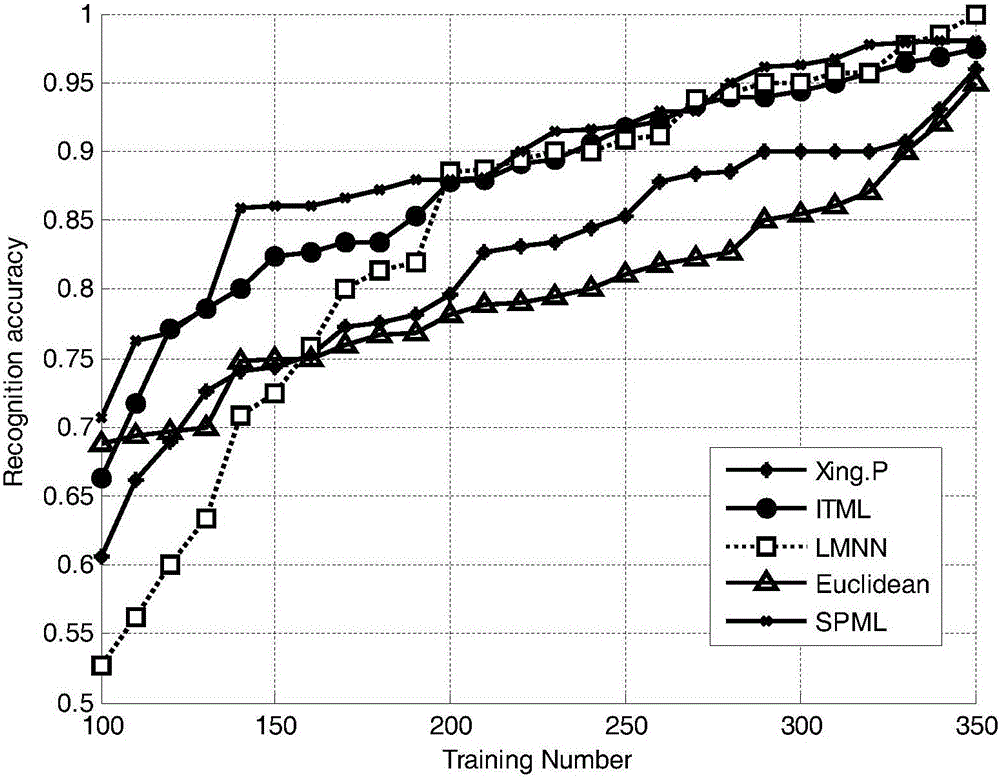Sparse maintenance distance measurement-based human face identification method
A distance-keeping and face recognition technology, which is applied in the field of face recognition based on sparse distance-keeping measures, can solve the problem that distance measurement algorithms are difficult to further improve the recognition accuracy, and achieve the effect of improving the recognition accuracy.
- Summary
- Abstract
- Description
- Claims
- Application Information
AI Technical Summary
Problems solved by technology
Method used
Image
Examples
Embodiment Construction
[0040] The present invention will be described in detail below in conjunction with the implementations shown in the drawings, but it should be noted that these implementations are not limitations of the present invention, and those of ordinary skill in the art based on the functions, methods, or structural changes made by these implementations Equivalent transformations or substitutions all fall within the protection scope of the present invention.
[0041] ginseng figure 1 As shown, the present embodiment provides a face recognition method based on the sparse distance-keeping metric, and the specific implementation method is as follows:
[0042] Step S1, extract face data with label information from all stored face data (labeled data and unlabeled data), and construct a framework of a distance measurement algorithm based on the face data using the maximum bound theory.
[0043] Specifically include the following steps:
[0044] Step ①. The maximum boundary theory utilizes a...
PUM
 Login to View More
Login to View More Abstract
Description
Claims
Application Information
 Login to View More
Login to View More - R&D
- Intellectual Property
- Life Sciences
- Materials
- Tech Scout
- Unparalleled Data Quality
- Higher Quality Content
- 60% Fewer Hallucinations
Browse by: Latest US Patents, China's latest patents, Technical Efficacy Thesaurus, Application Domain, Technology Topic, Popular Technical Reports.
© 2025 PatSnap. All rights reserved.Legal|Privacy policy|Modern Slavery Act Transparency Statement|Sitemap|About US| Contact US: help@patsnap.com



